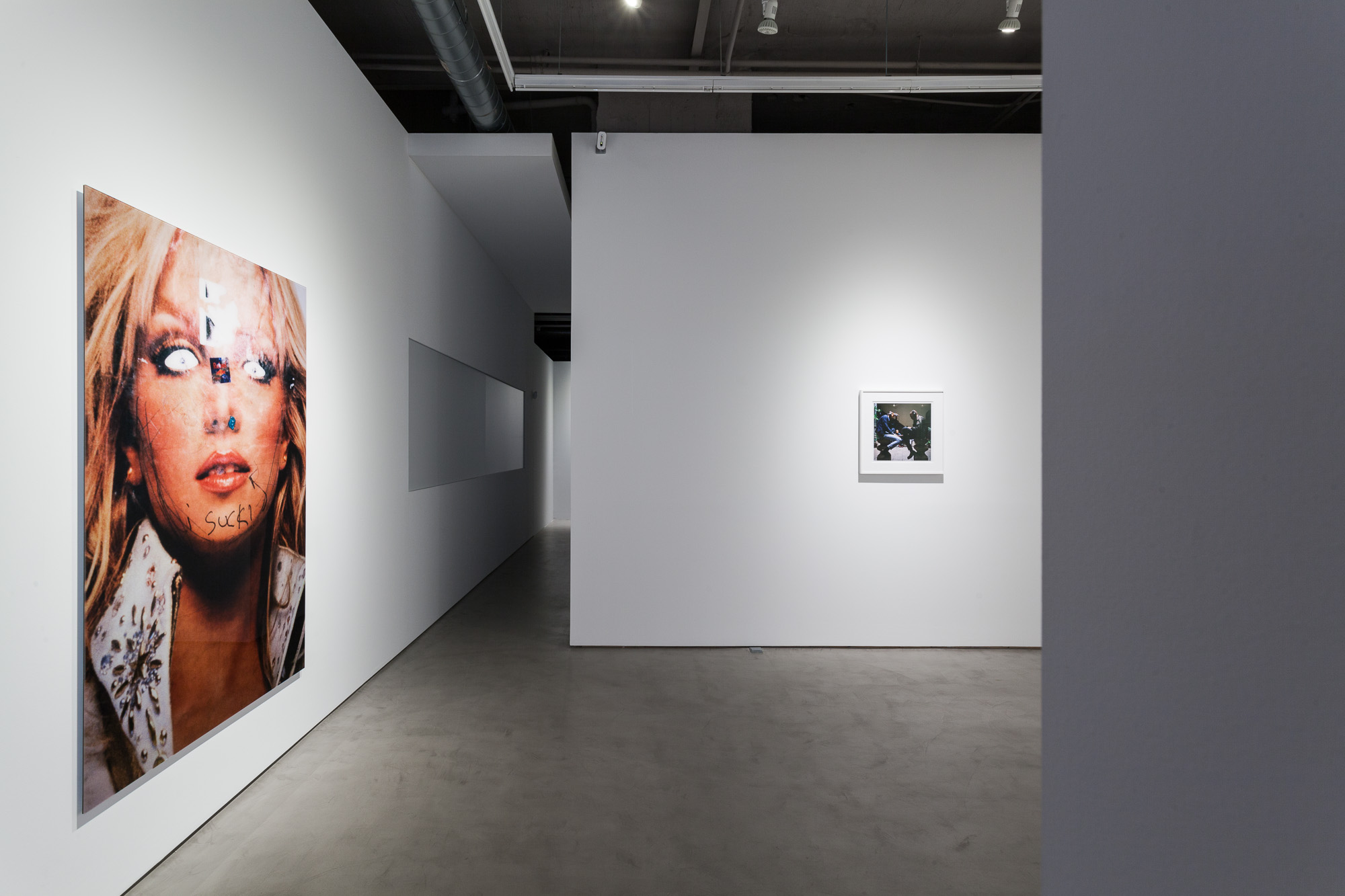
Gallery facade.

Exhibition view.

Exhibition view.

Exhibition view.

Exhibition view.

Exhibition view.

Real Society. 2002. 35mm slide projection.

Real Society. 2002. 35mm slide projection.

britney #5. 2001. 183 x 122 cm. Lightjet print on Fuji Crystal archive.

Real Society. 2002. 35mm slide projection.

Soy mi madre. 2008. Variable dimensions. 16mm film turned video, 28 min.

Rude Boy, Kek Lok Si #5. 2011. 26 x 26 cm. / Lightjet print on Fuji Crystal archive.

Soy mi madre. 2008. Dimensiones variables. Variable dimensions. 16mm film turned video, 28 min.

Rude Boy, Kek Lok Si #4. 2011. 26 x 26 cm. Lightjet print on Fuji Crystal archive.

Soy mi madre. 2008. Variable dimensions. 16mm film turned video, 28 min.

Rude Boy, Kek Lok Si #3. 2011. 26 x 26 cm. Impresión lightjet sobre Fuji Crystal archive.

Rude Boy, Kek Lok Si #2. 2011. 26 x 26 cm. Lightjet print on Fuji Crystal Archive.

Rude Boy, Kek Lok Si #1. 2011. 26 x 26 cm. Lightjet print on Fuji Crystal Archive.

Rude Boys, Leith Street #4. 2011. 70 x 70 cm. Lightjet print on Fuji Crystal Archive.

Rude Boys, Leith Street #3. 2011. 70 x 70 cm. Lightjet print on Fuji Crystal Archive.

Rude Boys, Leith Street #2. 2011. 70 x 70 cm. Lightjet print on Fuji Crystal Archive.

Rude Boys, Leith Street #1. 2011. 70 x 70 cm. Lightjet print on Fuji Crystal Archive.
Information
Phil Collins belongs to a generation of British artists whose work is characterised by the influence of popular culture, low-budget television and pop music. Through videos, photographs, installations and live events, Collins investigates the connection between the camera and its subjects, and, by extension, the power of the mediated gaze. It’s a relationship that also reveals the perils behind the acts of production, representation, distribution, and the assimilation of images in today’s society within seemingly transparent media such as video and photography.
Collins’ multifaceted approach is based on close engagement with people, place and communities, which over the years have included those in Spain, Colombia, Iraq, Palestine, Serbia, Turkey, Indonesia, and the USA. His projects are often announced through newspaper and poster campaigns, or take the form of castings and press conferences, so as to provide a wide-reaching platform for encounters predicated on high emotional stakes. Throughout, Collins’ work provides diverse readings of a given local situation, touching on issues such as gender, politics and social identity.
For the artist’s first solo exhibition in Madrid, Gallery Moises Pérez de Albéniz brings together four projects from the last ten years, each one presenting a different aspect of his work.
During a residence at Aspen Art Museum in 2008, Collins decided to focus on the Latino immigrant population employed as a low-paid domestic work force in the luxurious tourist resort of Aspen. A significant proportion of this population hails from Mexico and is largely invisible to the rest of American society. Collins reflects this situation by using the format of telenovela, one of the most popular cultural products of Latin America, marrying traditions of outrageous Latin American excess with the social realism of British soaps with which he grew up. In contrast to some of his other works, soy mi madre (2008) is a fictional episode loosely inspired by Jean Genet’s play The Maids (1947) and filmed with some of Mexico’s leading telenovela stars. soy my madre is narrated from the point of view of two maids – a mother and a daughter – who are forced to take justice into their own hands. It’s a melodrama with all the characteristic ingredients of the genre: love, power, social oppression, racism, treachery, and revenge.
In 2002 Collins was invited by D.A.E (Donostiako Arte Ekinbideak) to San Sebastián to participate in the site-specific programme Front Line Compilation, the result of which was the project real society (2002). Inspired by the city, he organised a photo session for anyone interested in posing for him in a suite of the iconic Maria Cristina Hotel. The session was announced through the local media, creating an open platform for a society of those who were willing to undress in front of a stranger with a camera. The resulting pictures capture intimate moments between the photographer and the subjects, conveying the generosity of the models in doing something so private and intense, and a kind of intimacy which, paradoxically, becomes public.
Currently, real society is presented as a slide projection in order to highlight, on the one hand, the narrative structure of the work, and, on the other, the affective qualities of this particular medium, which create an atmosphere of intimacy unfolding in front of the viewer as each new image is unveiled.
In the series Rude Boys (2011), Collins photographs a group of young anti-fascist skinheads in various sites on the island of Penang in Malaysia. The young men proudly display elements characteristic of skinhead style: shaved heads, drainpipe jeans, plaid shirts, braces, bomber jackets, and Dr. Martens boots. Collins was intrigued by the fact that the skinhead identity, which originated as an anti-racist working class movement in Britain in the 1970s, and later incorporated white supremacist elements and came to be associated with neo-Nazism, reemerged in 1990s in Southeast Asia as a specifically anti-fascist subculture.
The final work included in the exhibition is britney #5 (2001) from a series of large-scale photographs of graffitied and defaced Britney Spears posters which Collins shot along different lines of the New York subway in 2001. The poster was part of the Dream Within a Dream publicity campaign, used to promote Britney (2001), third album by Spears who, at that point, was considered the ‘Princess of Pop’. The photographs are presented in large formats, creating an emblematic image of a pop star disfigured by her fans, as if in redemption for her sins.
Carolina Grau 2014
